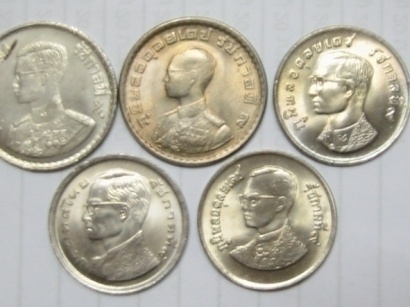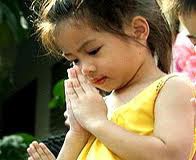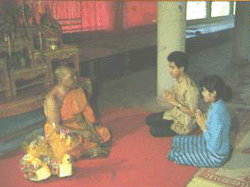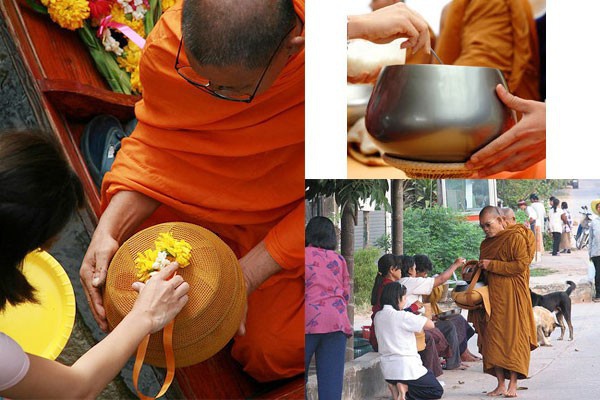
|

|
One of the most distinctive Thai customs is the wai, which is similar to the Indian namaste gesture. Showing greeting, farewell, or acknowledgment, it comes in several forms reflecting the relative status of those involved, but generally it involves a prayer-like gesture with the hands and a bow of the head.
Physical demonstrations of affection in public are common between friends, but less so between lovers. It is thus common to see friends walking together holding hands, but couples rarely do so except in westernized areas.
A notable social norm holds that touching someone on the head may be considered rude. It is also considered rude to place one’s feet at a level above someone else’s head, especially if that person is of higher social standing. This is because the Thai people consider the foot to be the dirtiest and fattest part of the body, and the head the most respected and highest part of the body. This also influences how Thais sit when on the ground—their feet always pointing away from others, tucked to the side or behind them. Pointing at or touching something with the feet is also considered rude.
It is also considered extremely rude to step on a Thai coin, because the king’s head appears on the coin. When sitting in a temple, one is expected to point one’s feet away from images of the Buddha. Shrines inside Thai residences are arranged so as to ensure that the feet are not pointed towards the religious icons—such as placing the shrine on the same wall as the head of a bed, if a house is too small to remove the shrine from the bedroom entirely.
It is also customary to remove one’s footwear before entering a home or a temple, and not to step on the threshold.
There are a number of Thai customs relating to the special status of monks in Thai society. Due to religious discipline, Thai monks are forbidden physical contact with women. Women are therefore expected to make way for passing monks to ensure that accidental contact does not occur. A variety of methods are employed to ensure that no incidental contact (or the appearance of such contact) between women and monks occurs. Women making offerings to monks place their donation at the feet of the monk, or on a cloth laid on the ground or a table. Powders or unguents intended to carry a blessing are applied to Thai women by monks using the end of a candle or stick. Lay people are expected to sit or stand with their heads at a lower level than that of a monk. Within a temple, monks may sit on a raised platform during ceremonies to make this easier to achieve.

|

|
Reference 1)
More information on Thailand:
Thai cultural tips to avoid common mistakes
Event calendar by Tourism Authority of Thailand
Event calendar by Thailand Grand Festival
Cooling summer 2009 by Thai Airways
Resources for tourist
